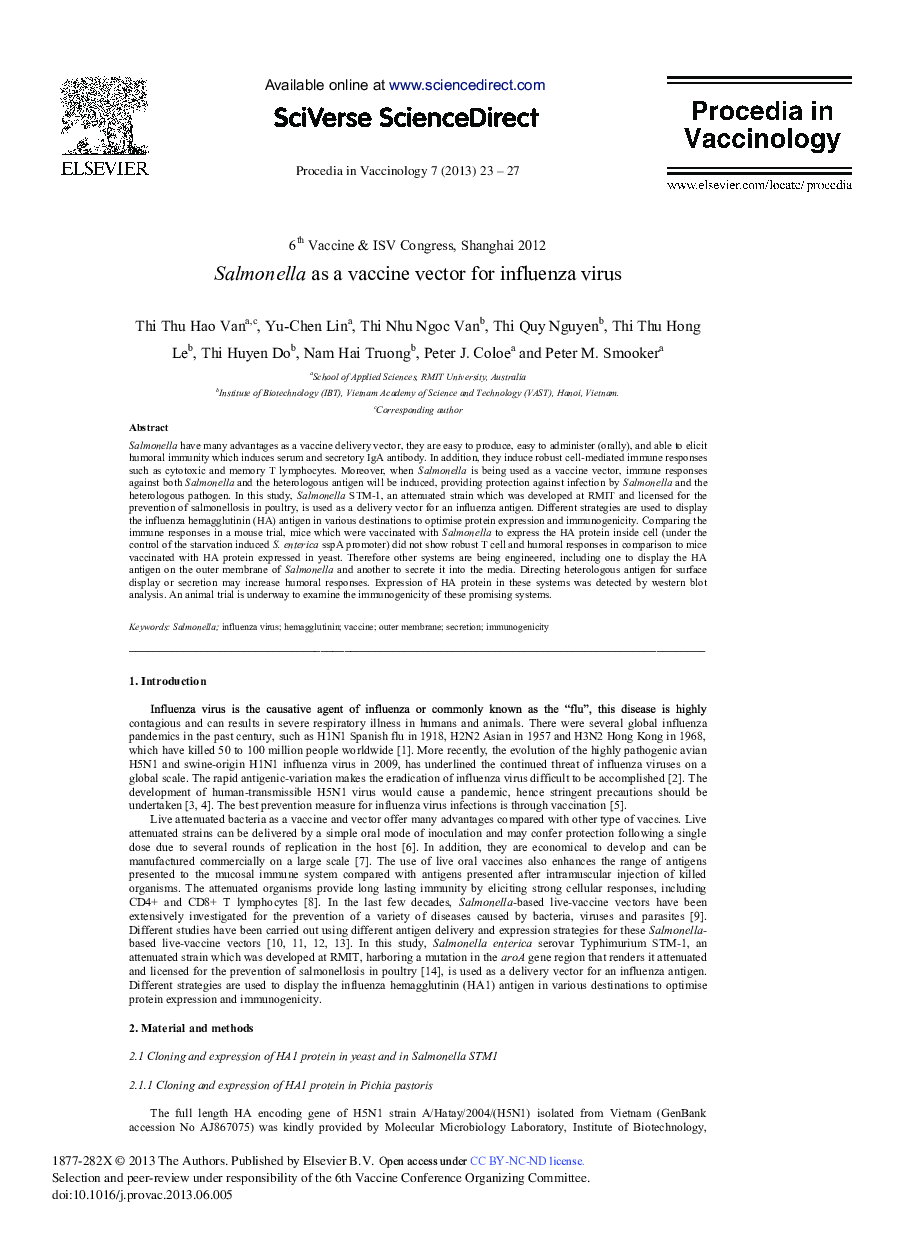| Article ID | Journal | Published Year | Pages | File Type |
|---|---|---|---|---|
| 2473834 | Procedia in Vaccinology | 2013 | 5 Pages |
Salmonella have many advantages as a vaccine delivery vector, they are easy to produce, easy to administer (orally), and able to elicit humoral immunity which induces serum and secretory IgA antibody. In addition, they induce robust cell-mediated immune responses such as cytotoxic and memory T lymphocytes. Moreover, when Salmonella is being used as a vaccine vector, immune responses against both Salmonella and the heterologous antigen will be induced, providing protection against infection by Salmonella and the heterologous pathogen. In this study, Salmonella STM-1, an attenuated strain which was developed at RMIT and licensed for the prevention of salmonellosis in poultry, is used as a delivery vector for an influenza antigen. Different strategies are used to display the influenza hemagglutinin (HA) antigen in various destinations to optimise protein expression and immunogenicity. Comparing the immune responses in a mouse trial, mice which were vaccinated with Salmonella to express the HA protein inside cell (under the control of the starvation induced S. enterica sspA promoter) did not show robust T cell and humoral responses in comparison to mice vaccinated with HA protein expressed in yeast. Therefore other systems are being engineered, including one to display the HA antigen on the outer membrane of Salmonella and another to secrete it into the media. Directing heterologous antigen for surface display or secretion may increase humoral responses. Expression of HA protein in these systems was detected by western blot analysis. An animal trial is underway to examine the immunogenicity of these promising systems.
